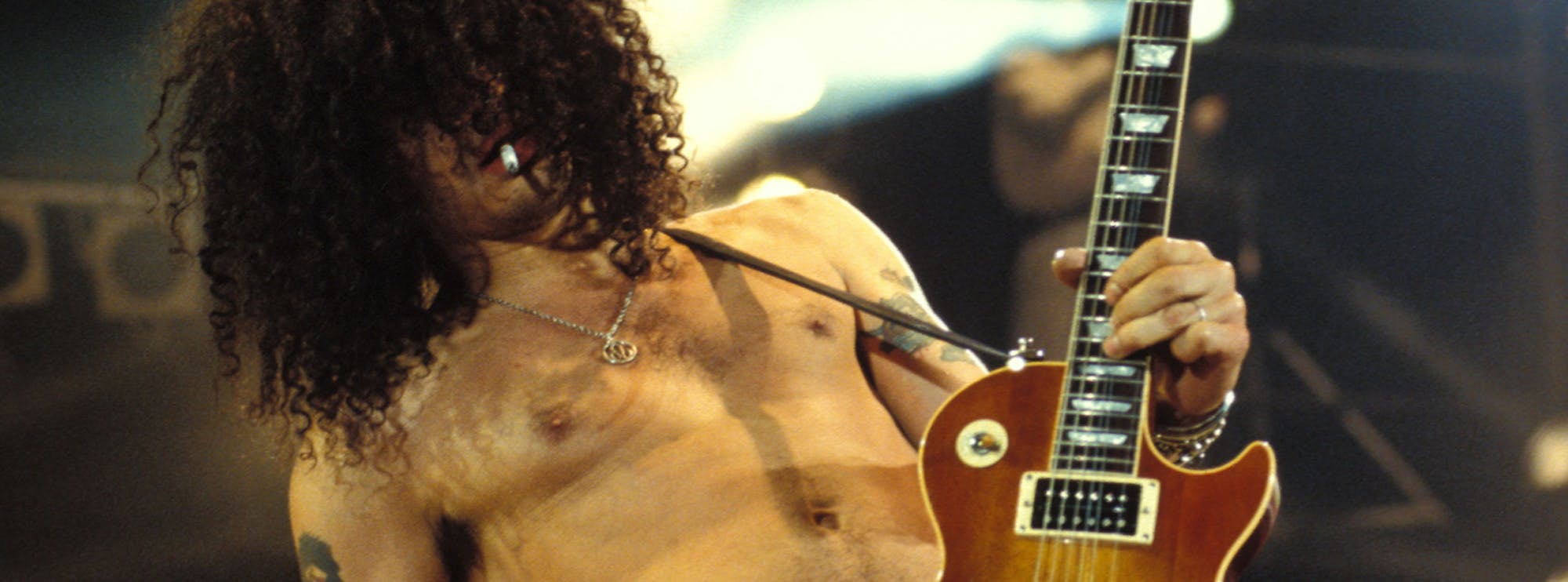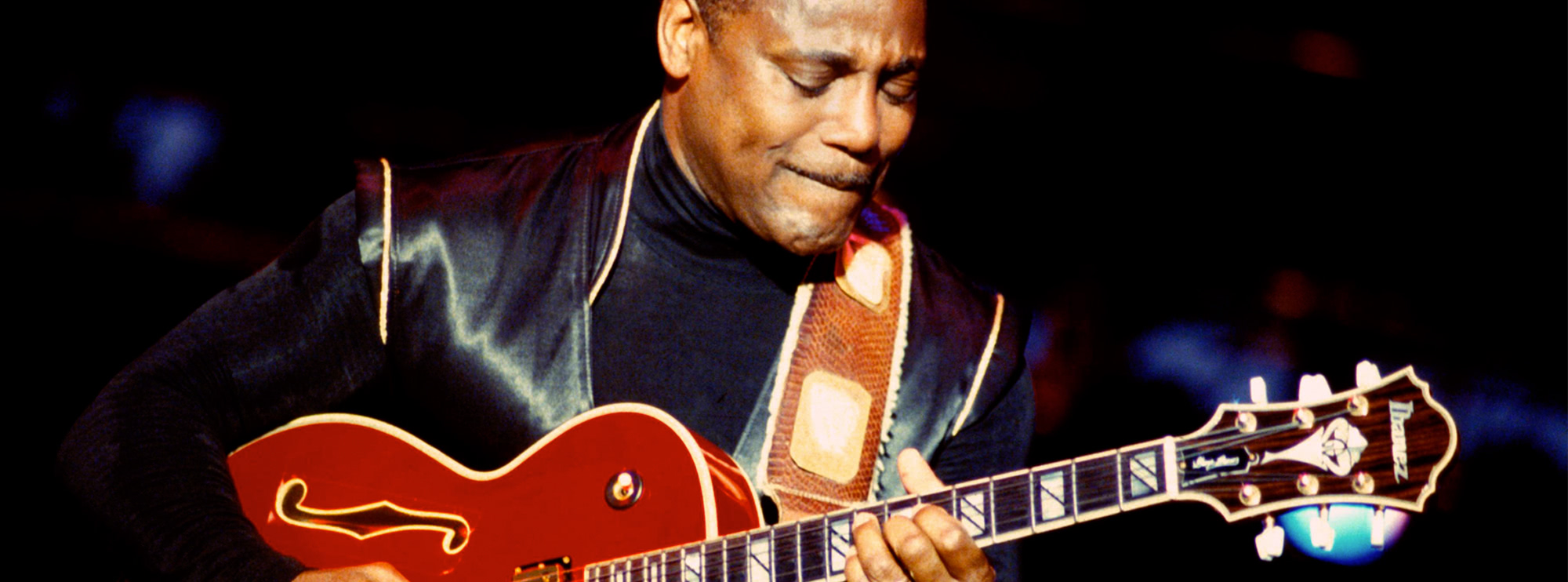I Hate Myself For Loving You - Joan Jett & The Blackhearts
Joan Jett & The Blackhearts' classic hit "I Hate Myself For Loving You" is a quintessential rock anthem that blends driving rhythms, memorable riffs, and powerful vocals. It's a song that has stood the test of time, thanks in no small part to the dynamic guitar work that fuels its energy. In this detailed guitar lesson, we'll take you through a note-for-note breakdown of the song, emphasising the key guitar techniques that are used throughout. Whether you're an intermediate player looking to add some rock flair to your playing, or an advanced guitarist seeking to master some specific techniques, this lesson has something for everyone. Richard Shaw breaks down this iconic rock track in this exclusive Lick Library video tutorial.
The Guitar Work in "I Hate Myself For Loving You"
The guitar work on "I Hate Myself For Loving You" is gritty, raw, and unapologetically rock 'n' roll. The song was recorded by Joan Jett and her band, The Blackhearts, with lead guitarist Ricky Byrd laying down the essential guitar parts. Byrd's playing in this track is a great showcase of classic rock techniques, and his guitar parts provide a solid foundation for Joan Jett's fiery vocals. Byrd was heavily influenced by classic rock, punk, and blues, which is reflected in his playing style. He incorporates a mix of power chords, syncopated rhythms, and some slick lead work that gives the song its punchy character.
Learning these techniques will not only help you play this song accurately but also give you an insight into how rock and punk guitarists like Byrd build their iconic sound.
Technique Focus in the Lesson
Power Chords
One of the most prominent features of the rhythm guitar in "I Hate Myself For Loving You" is the use of power chords. Power chords are essential for any rock player, providing a full, chunky sound that defines the genre. In this lesson, you'll learn how to perfect your power chords to achieve that tight, punchy sound. Mastering power chords will give you the ability to play countless rock songs with ease, as they form the backbone of most rock and punk guitar arrangements.
Palm Muting
Palm muting is another key element in the rhythm guitar work of this song. In the verses, you'll notice a tight, rhythmic pulse that drives the song forward. This is achieved through palm muting, which dampens the strings and creates a staccato effect. Learning palm muting will significantly improve your control over dynamics, allowing you to shift between muted rhythms and open, ringing chords for more dramatic contrast.
String Bending
When it comes to the lead guitar parts, string bending is a standout technique in the solos and riffs. Bending strings to reach specific notes adds emotion and expression to your playing. In this lesson, we’ll focus on achieving accurate bends to match the feel of the original recording. Mastering string bending will not only improve your ability to replicate classic rock solos but also help you inject more soul into your lead playing.
Slides
Slides are used in the song’s riffs and fills, adding fluidity and a smooth transition between notes. We’ll break down where slides are used and how to execute them effectively. Incorporating slides into your playing will enhance your phrasing, making your solos and riffs sound more connected and musical.
Syncopated Rhythms
The rhythm guitar work in "I Hate Myself For Loving You" features some syncopated rhythms, which give the song its driving rock feel. Syncopation involves placing emphasis on off-beats or unexpected points within the measure. This lesson will help you understand how to lock into these syncopated rhythms, adding a layer of complexity and groove to your rhythm playing. Learning syncopation will improve your overall timing and feel, making your strumming more dynamic and engaging.
Bluesy Bends
The solo section in "I Hate Myself For Loving You" also features bluesy bends, giving it a raw and emotive quality. In this lesson, we'll explore these bends in detail, showing you how to create that perfect rock-blues fusion. Bluesy bends are a staple of rock guitar playing, and by mastering them, you'll open up new possibilities for expression in your lead guitar work.
The Benefits of Learning These Techniques
By learning the techniques featured in "I Hate Myself For Loving You," you'll develop a deeper understanding of how to create dynamic, high-energy guitar parts. Here’s how each technique benefits you as a player:
- Power Chords: Provide the foundation for countless rock songs and improve your ability to play rhythm guitar with power and precision.
- Palm Muting: Enhances your control over dynamics, giving you the ability to switch between tight, muted rhythms and open chords seamlessly.
- String Bending: Adds expression to your solos, helping you capture the emotional tone of each note.
- Slides: Improve the fluidity and connection between notes, making your playing sound more polished and professional.
- Syncopated Rhythms: Develop your timing and rhythmic complexity, allowing you to play more interesting and engaging rhythm parts.
- Bluesy Bends: Give your lead playing a raw, emotional quality that’s perfect for rock and blues solos.
Each of these techniques is vital for building a well-rounded rock guitar toolkit, and once mastered, they can be applied to a variety of styles and songs.
Guitar Techniques Used in This Lesson:
By the end of this lesson, you’ll not only be able to play "I Hate Myself For Loving You" note for note but also expand your guitar-playing abilities with a strong set of essential rock techniques.
Guitar Techniques Used in the Lesson
This comprehensive lesson from LickLibrary.com is your gateway to not just playing but mastering the art of rock guitar. Dive into the lesson to unleash your potential and rock out with the spirit of Joan Jett!
About The Tutor
Tutor Profile
Rich Shaw
Richard is most well known as the guitarist and co-songwriter for UK metal band, Cradle of Filth, from 2014 until 2022. In his time with the band, he co-wrote and performed on the albums ‘Hammer of the Witches’ (2015), ‘Cryptoriana - The Seductiveness of Decay’ (2017), and ‘Existence is Futile’...




